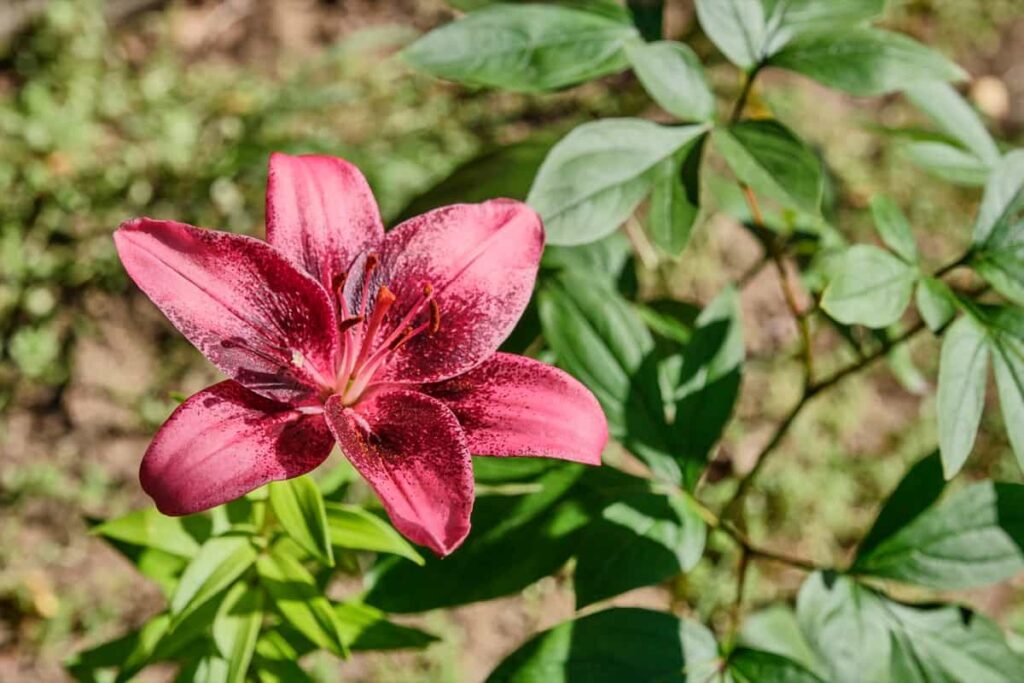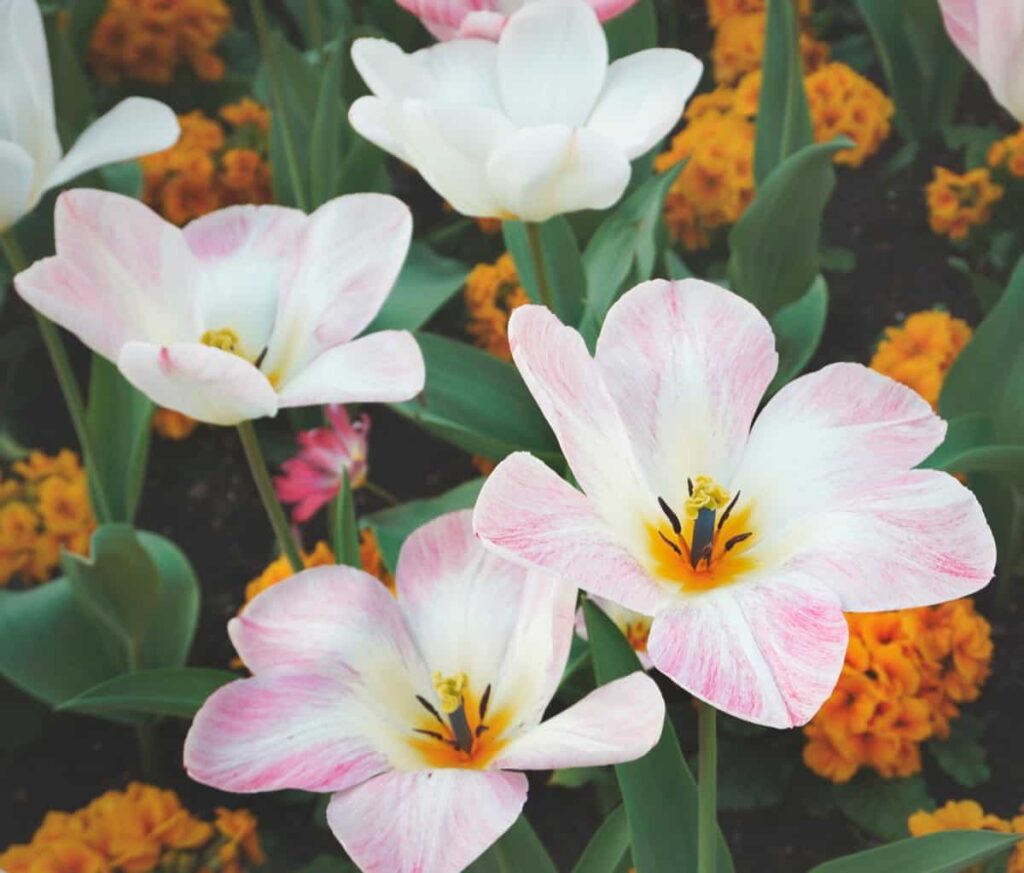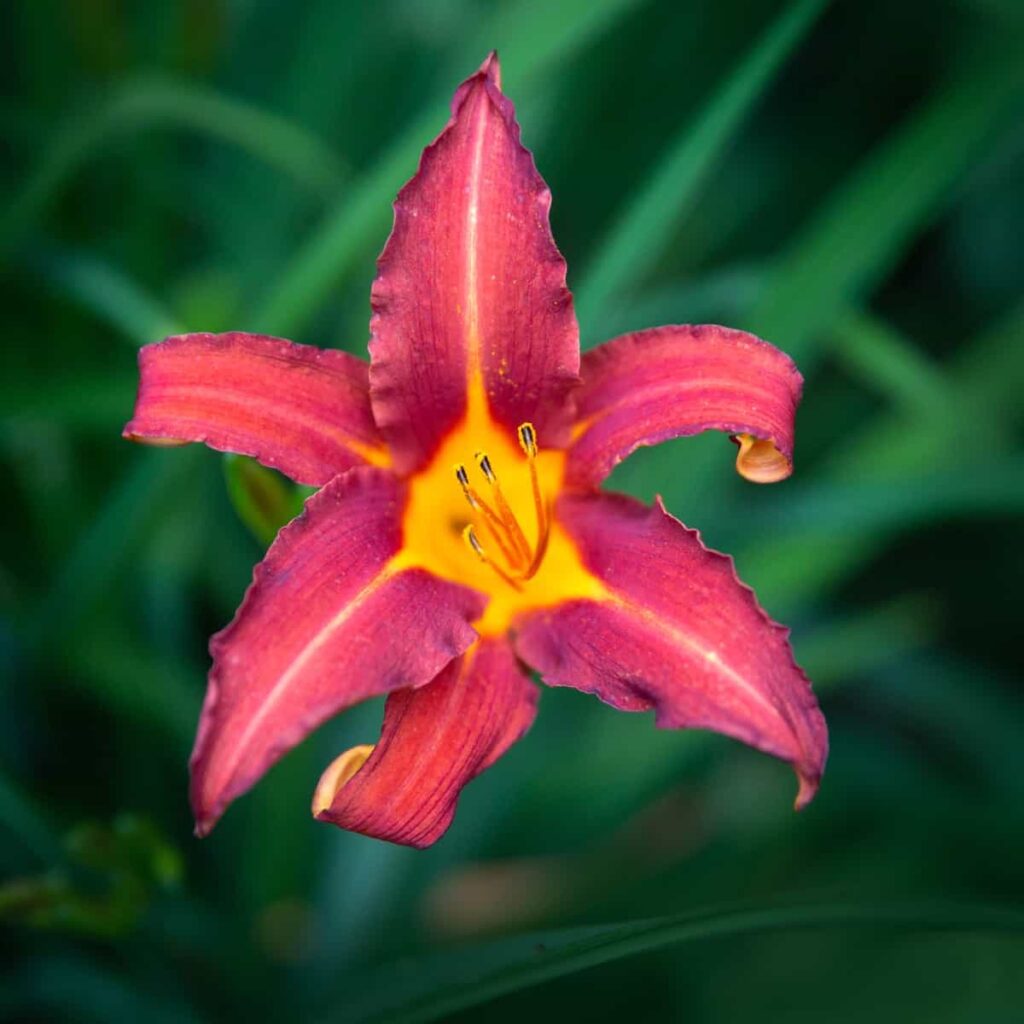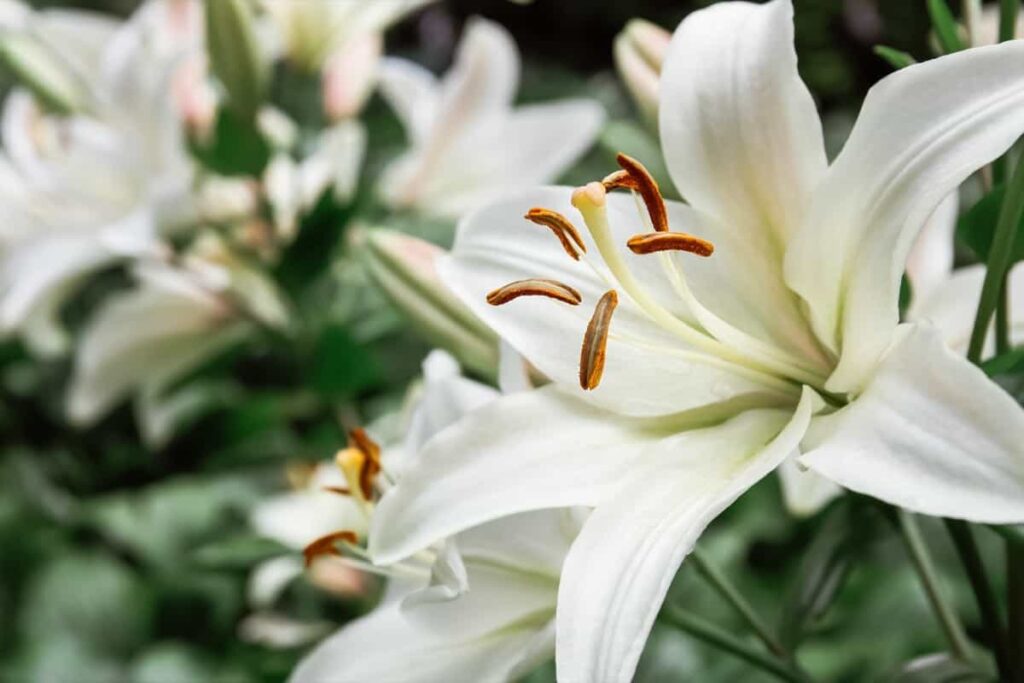Lilies, a genus of herbaceous flowering plants known as Lilium, are a stunning addition to any garden. With their vibrant colors and elegant blooms, it’s no wonder they hold such appeal for flower enthusiasts. They bring beauty and grace to any garden or floral arrangement. Some popular varieties include Asiatic lilies, Oriental lilies, Trumpet lilies, and Tiger lilies. Each variety has its unique traits and charm.

Blooming Season of Lily Flowers
The Life Cycle of Lily Flowers: From Bulb to Bloom
The life cycle of Lily Flowers is truly a fascinating journey, starting from a tiny bulb and ending with stunning blooms. It all begins with the planting of the bulb in well-drained soil during the fall season. The bulb then lies dormant throughout the winter months, gathering strength and energy for what’s to come. As spring approaches, you’ll start to notice small shoots emerging from the ground.
These shoots grow steadily taller, developing into sturdy stems that hold promise for beautiful flowers. Soon enough, buds form at the top of each stem, tightly closed and full of potential. But this remarkable transformation doesn’t end there. Once in full bloom, lilies attract pollinators such as bees or butterflies, who help carry pollen from one flower to another. This crucial step ensures cross-pollination and future generations of Lily plants.
After blooming for a period ranging from days to weeks, depending on the variety, lilies enter their final stage: seed production. Fertilized flowers develop seed pods containing numerous tiny seeds within them. As these pods mature and dry out over time, they eventually split open to release their precious bloom.
Factors Affecting Lily Flower Blooming Season: Understanding Environmental and Cultural Influences
Sunlight – Lilies require ample sunlight to thrive and produce vibrant, healthy flowers. Insufficient sunlight can delay or even inhibit blooming altogether. So, make sure to choose a suitable location for your lilies where they can receive at least six hours of direct sunlight daily.
Soil moisture – While lilies prefer well-draining soil, they also need consistent moisture during their growing season. Too much water to your Lillies can lead to root rot, while insufficient watering may cause stunted growth and delayed blooming.
Temperature – Temperature fluctuations also impact the blooming season of Lily flowers. These plants favor moderate temperatures, with an ideal range between 15-24°C. Extreme heat or cold can affect their development and delay flowering.
Early Spring Bloomers: A Closer Look at Early-Blooming Lily Varieties
One popular variety that blooms early in the season is the Asiatic Lily. Known for their bold, upright blooms in a wide range of colors, including vibrant reds, sunny yellows, and soft pinks, these lilies are sure to make a statement in any garden or floral arrangement. Another early bloomer to look out for is the Martagon Lily.
In case you missed it: 10 Best Compost Brands for Flowering Plants in India: Organic, Natural, and Quality Compost Brands

With its graceful downward-facing flowers clustered along tall stems, this variety adds an elegant touch to any garden bed. Available in shades ranging from creamy whites to deep purples and speckled patterns, Martagon lilies bring a sense of sophistication to your outdoor space.
Mid-Spring to Early Summer Blooms: Exploring the Peak Season for Lily Flowers
As the days grow longer and warmer, Lily enthusiasts eagerly anticipate the arrival of mid-spring to early summer blooms. This is the time when lilies showcase their full glory, adorning gardens and landscapes with vibrant colors and intoxicating fragrances. During this peak season, a diverse range of Lily varieties burst into bloom. From elegant Asiatic lilies with their bold hues to graceful Oriental lilies exuding sweet scents, there is a Lily for every taste and preference.
These stunning flowers are known for their large, showy petals that open up like delicate parasols under the warm sun. The popular varieties that flourished during this period are the Trumpet Lily and Tiger Lily. With their trumpet-shaped blossoms in pristine white or creamy yellow tones, these majestic flowers make a grand statement in any garden setting.
Late Summer and Fall-Blooming Lilies: Understanding Varieties with Extended Blooming Periods
These late bloomers add a touch of beauty and elegance to gardens during a time when other flowers may be fading. Oriental Lily is one such variety with an extended blooming period. Their extended blooming period makes them a favorite among garden enthusiasts who want to enjoy vibrant colors throughout the later part of the year. Another variety is the Trumpet Lily. It typically begins blooming in mid-summer but can continue well into autumn if provided with proper care.
Asiatic Lilies are hardy plants that come in an array of hues ranging from bold oranges and reds to delicate pinks and whites. They are known for their ability to withstand cooler temperatures, making them perfect candidates for fall planting. It’s important to note that while these late bloomers offer an extended flowering season, they still require proper maintenance, just like any other plant.
Caring for Lily Flowers During Blooming Season: Tips for Optimal Growth and Blooms
Providing them with the right amount of sunlight is crucial. Lily plants thrive in full sun or partial shade, so make sure they receive 6 hours of direct sunlight each day. These elegant flowers prefer moist but well-draining soil. Fertilizing your lilies regularly is key to promoting healthy growth and abundant blooms. To prevent plant diseases like powdery mildew or botrytis blight, proper air circulation around your lilies is essential.
Extending the Blooming Season of Lilies: Techniques for Prolonging the Beauty of Lilies
Deadheading is an effective technique for extending the blooming season of lilies. By removing spent flowers as they fade, you encourage your Lily plant to redirect its energy into new blooms rather than seed production. This will help prolong the blooming season and ensure that your lilies continue to dazzle with vibrant colors.
In case you missed it: How to Grow Brahma Kamal Flower in the Home Garden: Guide for Growing in Pots and Ground

Another tip is to provide adequate water and nutrients to your Lily plants. Keeping them well-hydrated during hot summer months is crucial for healthy growth and prolonged flowering. Adding a layer of mulch around your Lily plants can also help regulate soil temperature, retain moisture, and prevent weed growth. This extra layer acts as insulation for the bulbs, protecting them from extreme temperatures while promoting optimal conditions for prolonged flowering.
Lily Flower Festivals Around the World: Celebrating the Splendor of Lily Blooms
Lily flower festivals are a vibrant and colorful celebration of nature’s beauty. These festivals take place in various parts of the world, showcasing the enchanting blooms of lilies in all their glory. Japan and Canada’s events attract visitors from near and far who come to admire the splendor of Lily flowers.
In Asia, countries like China, South Korea, and Taiwan also host grand festivals dedicated to lilies. The Lily Festival is held at Gwaebul Temple; South Korea is particularly famous for its breathtaking landscapes adorned with thousands of lilies. Europe too has its fair share of Lily flower festivities. In North America, places like Oregon and California hold remarkable Lily Festivals where visitors can immerse themselves in fields abounding with vibrant blooms.
Symbolism and Cultural Significance of Lily Bloom: Exploring the Meaning Behind the Flowers
Lily flowers hold a deep symbolism and cultural significance in various societies around the world. In many Western countries, lilies are associated with purity, innocence, and rebirth. They are often used in weddings to symbolize new beginnings and hope for a bright future. On the other hand, ancient Greeks considered lilies as symbols of fertility and motherhood. In Asian cultures, lilies hold profound spiritual meaning. The Christian tradition also assigns symbolic importance to lilies. Moreover, lilies have been embraced by artists throughout history for their beauty and elegance.
Frequently Asked Questions (FAQ) on Blooming Season of Lillies
How Long Does a Lily Flower Stay in Bloom?
The duration of a Lily flower’s blooming period can vary from several days to a few weeks, again depending on the specific type of Lily and environmental factors. Some varieties may have shorter-lived blooms that last only a few days, while others can maintain their beauty for up to three weeks or more.
In case you missed it: Top 10 Best Organic Fertilizers in India: Top Companies for Vegetables, Flowers and Fruit Plants along with Price

How Do I Know If My Lily Plant Is Ready to Bloom?
As your Lily plants mature, they will start producing buds that gradually open up into beautiful flowers – it’s an exciting moment for any gardener.
What Should I Do If My Lily Plants Don’t Bloom?
If your Lillies aren’t flowering despite being well-established, evaluate factors such as sunlight exposure, nutrient deficiencies or excesses in soil, and proper watering.
Conclusion
The blooming season of Lily flowers holds great importance in the world of gardening and floral aesthetics. It is a time when these exquisite blooms grace gardens, parks, and events with their vibrant colors and delicate fragrances. The blooming season of lilies is a much-awaited time for flower enthusiasts and garden lovers alike. It’s the time when these beautiful blooms burst into life, adding splashes of color to gardens, parks, and floral displays.
- Profitable Village Farming Business Ideas in 2024
- High-Yield Aquaculture: Fast-Growing Fish for Farming
- Effective Fish Pond Construction Techniques for Beginners
- Irrigation and Water Management in Pineapple Farming
- Blossom to Harvest: Mastering Flowering and Pollination in Papaya Farming
- Pig Fattening Essentials: From Selection to Sale for Beginners
- Raising Wagyu Cattle: A Complete Guide for Premium Beef Production
- Soil Types and Their Water Holding Capacity
- Optimizing Irrigation Schedules for Coconut Groves for Enhanced Yield
